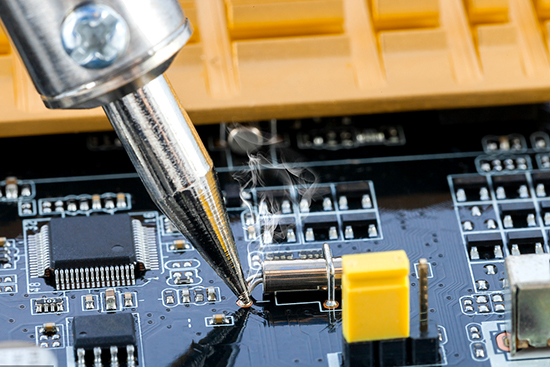What Should We Do If There are Soldering Errors During PCB Processing?
What should we do if there are soldering errors during PCB processing? Don't be afraid, let's take a look at how PCB factory deal with it.

1. Troubleshooting
If you know where the PCB is soldered incorrectly, you can skip this step and go directly to the next step. First of all, the PCB factory will conduct a preliminary inspection of the appearance of the PCBA, and visual inspection can find out the components that are soldered incorrectly. It will also be determined by checking the name, value and other information of the components, or through the circuit diagram.
PCB factory will also locate wrong components in a faster way. For example, use professional testing equipment for testing.
2. Soldering Iron Tool
For most soldering errors, it is possible to fix them with a soldering iron. Let's first understand what to pay attention to when using a soldering iron:
1) Choose the right soldering iron tip - Different components and solder joint sizes require different shapes of soldering iron tips.
2) Control the temperature of the soldering iron - Excessive temperatures can cause damage to components or melting of solder joints.
3) Control soldering time - Excessive soldering time can also cause components damage or solder joints melting.
3. Remove Solder
Before re-soldering components, the original solder needs to be removed. Commonly used tools include hot air gun, constant temperature iron, tin wire, anti-static tweezers, anti-static bracelet, anti-static brush, solder resist, board washing water, solder sucker, etc.
Before using the tool, clean up the areas that needs to be reworked and soldered, including the nearby areas. It is also necessary to remove parts affected by heat, such as rubber parts, plastic parts, etc.
4. Re-solder
After the solder joints have been cleaned up, the components need to be re-soldered. During the soldering process, the following points need to be paid attention to:
1) Choose the right solder - Different components require different specifications of solder.
2) Control the temperature of your soldering iron - Too high a temperature can cause component damage or solder joint melting, while too low a temperature can cause a weak solder joint.
3) Choose the right welding method:
Manual Soldering: Manual soldering requires manually applying solder to the solder joints and heating them with a soldering iron. This method is suitable for welding a small number of components.
Wave Soldering: Wave soldering requires sliding the PCBA through a wave soldering machine along the solder surge area so that the solder comes into contact with the solder joint and melts. This method is suitable for batch welding.
Reflow soldering: Reflow soldering requires the use of specialized reflow soldering equipment to heat the entire PCBA and melt the solder. This method is suitable for high-density components.
No matter which soldering method is used, we need to pay attention to protecting the PCB and surrounding components to avoid damage.
5. Test PCBA
After the components are re-soldered, they need to be tested to ensure that the PCBA can work normally. Commonly used test methods:
1) Use a multimeter to test the connectivity between components;
2) Use ICT/FCT professional functional test equipment to test the pins and functions of PCBA.
HoYoGo is an international, professional and reliable PCB factory, including one-stop services from upstream electronic component procurement to PCB production and processing, SMT placement, PCBA testing, and finished product assembly.
评论
发表评论